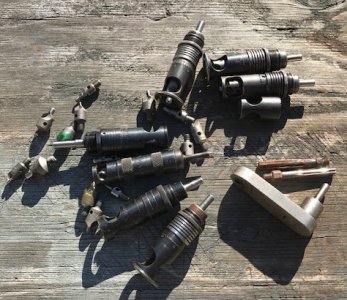- Joined
- Jul 20, 2014
- Messages
- 1,386
Great information Mikey. I don't have any MA Ford cutters but may get a set if they come up for a good price.
I have several in 82 and 90° of various sizes for metric and imperial fasteners and to chamfer holes when needed.
A good amount of cutting oil is also key, I think. I was running my CS's much too fast.
I have several in 82 and 90° of various sizes for metric and imperial fasteners and to chamfer holes when needed.
A good amount of cutting oil is also key, I think. I was running my CS's much too fast.



 school, and usually they had problems of their own already. Chatter: Try slow rpm and increasing feed or somehow cutting a multi staged countersink. You're basically ramming it in instead of sneaking up so the metal *probably* is more or less being formed depending on when it decided to break a chip. If you were boring a(n) internal taper would you start at the maximum depth of cut or work your way into the material.
school, and usually they had problems of their own already. Chatter: Try slow rpm and increasing feed or somehow cutting a multi staged countersink. You're basically ramming it in instead of sneaking up so the metal *probably* is more or less being formed depending on when it decided to break a chip. If you were boring a(n) internal taper would you start at the maximum depth of cut or work your way into the material.